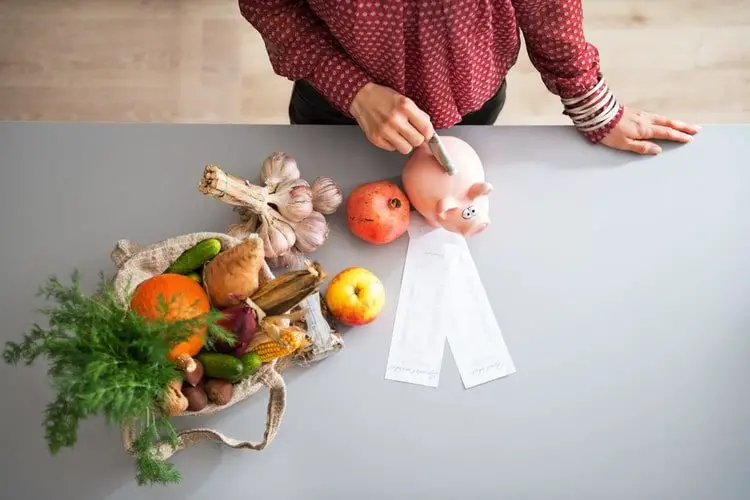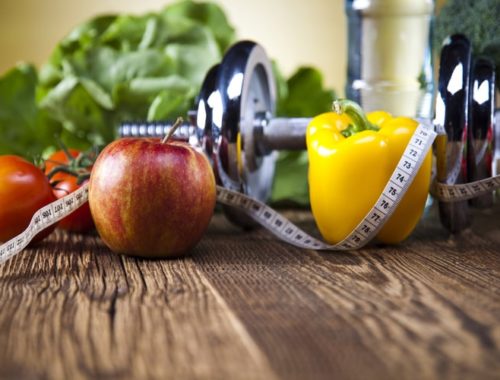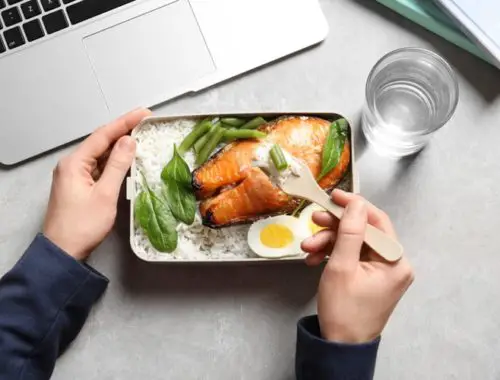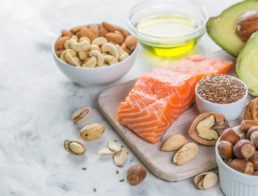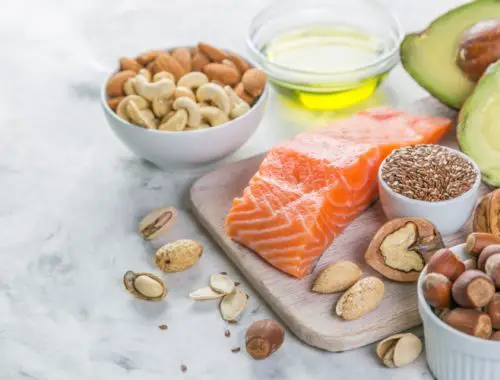Okay, time for tough love… If your excuse to not eating healthy is because it’s “too expensive,” today’s the day your excuse becomes invalid!
There are plenty of ways to save money while keeping food costs low. (And no, you don’t have to grow your own food or hunt). You just have to know the expert hacks!
How to Eat Healthy (and Stay on Budget)
1. Turn 1 meal into 2
From now on, when you order a restaurant meal, think of it as 2 meals (which it is). Split it with someone or box half of it for home. Restaurant meals are too large and high in calories, so you’re doing your wallet and your health a favor!
2. Drink water instead
Water is cheap and/or free! Instead of sugary drinks like soda, coffee drinks, sports drinks, juice and alcohol, save money by choosing water. Plus, it’s healthier!
3. Skip the “extras”
Outside of your main meal, you may also have a dessert or a side of chips. To save on calories and cash, skip those items or enjoy them 1-2 times per week.
4. Eat less fast food
Despite those juicy $2 sandwiches and dollar-menu items, fast food can actually be more expensive per meal than if you made something at home. So yes, it’s possible to make a meal that costs you less than $1 with home ingredients!
5. Eat out less
Turning 1 restaurant meal into 2 is good, but you may want to eat out less overall. Besides the higher calories, sodium and fat in many restaurant meals, they’re highly overpriced for profit and ambiance.
6. Make a grocery list (and stick to it)
Whether or not you’re focusing on cost when you make a grocery list, try to stick to the list. This way, you know exactly what you’re getting. Make a grocery list that includes food from all food groups: fruits, vegetables, lean protein, healthy fats and whole grains.
Bonus tip: Don’t go grocery shopping hungry, otherwise you’re likely to reach for things that are not on the list (and they’re usually unhealthy things).
7. Choose generic versions of your favorite products
While not every generic product is the exact same as the name brand, most generic products are pretty good. Nutritionally, generic products are often very comparable to name brand items. So, why pay more?
Hey! Did you know that grocery stores often put name brand and higher-priced products at eye level on the shelves? And, if you’re in the kids’ cereal aisle, those name brand cereals are usually at your kid’s eye level. Look a little bit up or down and you’ll see the generic versions.
8. Compare price per unit
Even though a smaller container is indeed cheaper than a larger container, it’s important to look at “price per unit” or “price per ounce.” Most grocery stores put the price per unit/ounce right next to the big price. If you can, buy the larger container because you’ll be paying less per serving than if you bought the small size. Look for labels like “family size,” “value size” or “30% more.”
9. Forget single-serve stuff
To piggyback on Tip #8, it’s often cheaper per serving if you buy value sizes (larger containers). Take yogurt for example, instead of getting those (handy) individual yogurt cups, buy the pint size. Yes, it’s not as convenient, but you’re saving money when you spoon it out for yourself.
10. Buy the freshest perishables available
Another component of eating healthy for cheap is avoiding food waste. If your milk spoils before you drink all of it, that’s cash gone to waste. So, next time you’re buying perishable items, check the “best by” dates. In the milk fridge, you may need to grab the 3rd or 4th milk jug back to get the latest “best by” date as possible.
11. Pack a lunch
When you’re at work or on-the-go, it’s tempting to choose fast food for convenience… and those seemingly irresistible deals. But remember, homemade meals tend to be cheaper per serving than even dollar-menu items (hard to see, I know). So, make an effort to pack your lunch to save on cash, calories and poor nutrition. I love this great Yeti lunch box to keep food fresh and cool for hours!
12. Pack snacks
If hunger creeps in on a road trip, at work or at practice, it’s easy to slip away to a vending machine and drop $2 on a bag of chips. Not only are vending machines notorious for unhealthy fixes, they’re pricey… especially if you do it every day, every week for a year! I always have healthy non-perishable snacks in my purse. Get a bag of these Blue Diamond healthy almonds and pre-portion them yourself. You get 40 servings in a 40-ounce bag!
13. Choose cheap proteins
Here’s a list!
- Eggs
- Dried or plain, canned beans (watch the sodium)
- Canned tuna and salmon
- Canned chicken
14. Choose in-season produce
When it’s in-season and local, there’s usually a surplus (and price drop) available. For a list of produce by season, click here.
15. Buy frozen vegetables
Not all veggies are expensive! Not all produce goes bad quickly! The secret: Buy frozen vegetables. Plain, frozen vegetables retain most, if not all, of the same nutrition as fresh vegetables. Plus, they last for months in the freezer.
16. Chop your own salad
While frozen veggies won’t work well for salad, there’s still ways to save when buying salad greens. Buying the pre-packaged salad mixes is tempting, but they’re over-priced. Buy a head of lettuce, a head of cabbage and some dark green bunches to chop yourself.
17. Buy frozen fruit
It’s just like Tip #15. Buy plain, frozen fruit and you’re winning!
18. Buy healthy canned goods
Always watch the flavorings and sodium in canned goods. Choose canned vegetables in water and plain beans when possible.
19. Buy in bulk
If it’s shelf stable and healthy, buy it in bulk to save per serving. Healthy items to stock up on:
- Quinoa
- Brown rice
- Dried Beans
- Plain popcorn
- Peanut butter
- Canned fish
- Canned chicken
- Nuts and seeds
20. Freeze the excess
Whether you’ve got leftover meals or leftover ingredients, you can usually freeze it for later… like months later! Print out this list of freezer and refrigerator storage guidelines by food.
But, make sure you store it safely! I like this vacuum sealer for freezer storage needs!
So, what’s your excuse?
If all these tips seem out of reach for you, then try to master just a couple for now. Even adopting 1-2 tips will help you save money while getting healthier!
